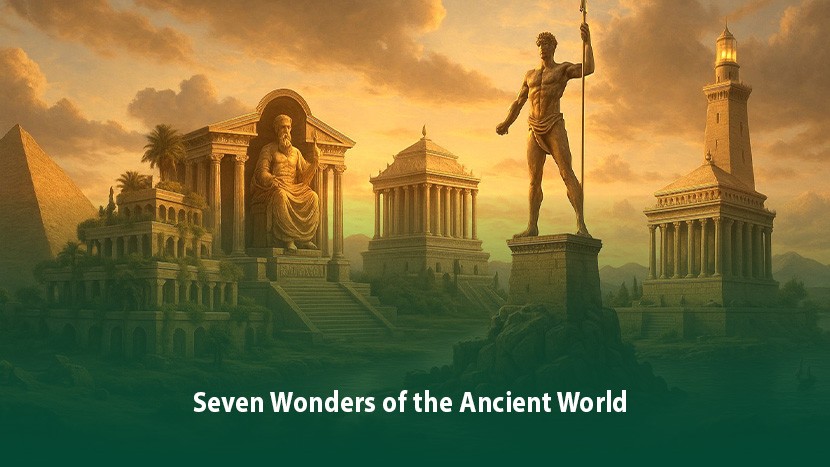
Humans have always been creative, as seen in the remarkable works of art throughout history. From the Mona Lisa to The Starry Night and the Pyramids of Giza to the Burj Khalifa, these creations show humanity's ability to innovate, engineer, and express art. Today, let's talk about the wonders of the ancient world. When thinking about the wonders, you might realize that there are more than seven of them; you might also think about what makes them worthy of being called wonders. The ancient Greek travelers carefully documented the places they encountered on their journeys, explaining why the wonders are close to each other. Though there were various wonders before his time, the list compiled by Antipater of Sidon, who was said to have lived in the second century BC, is the most famous. We'll explore how each wonder was built.

Pyramids of Giza
The ancient Egyptians were known for many inventions, such as the first battering ram and arrow slits, as well as their advancements in water irrigation and dams. However, their most famous achievement is the pyramids, especially the Great Pyramid of Giza. Built around 2600 BC by Pharaoh Khufu, it's the oldest of the Seven Wonders of the World and the only one that remains largely intact today. However, the pyramid's height has decreased from the original 147 meters to 137 meters due to erosion and the removal of the limestone casing. It was the tallest building for over 3,800 years until Lincoln Cathedral in England surpassed it in 1311. The pyramid served as the tomb of Pharaoh Khufu and took about 20 years to complete
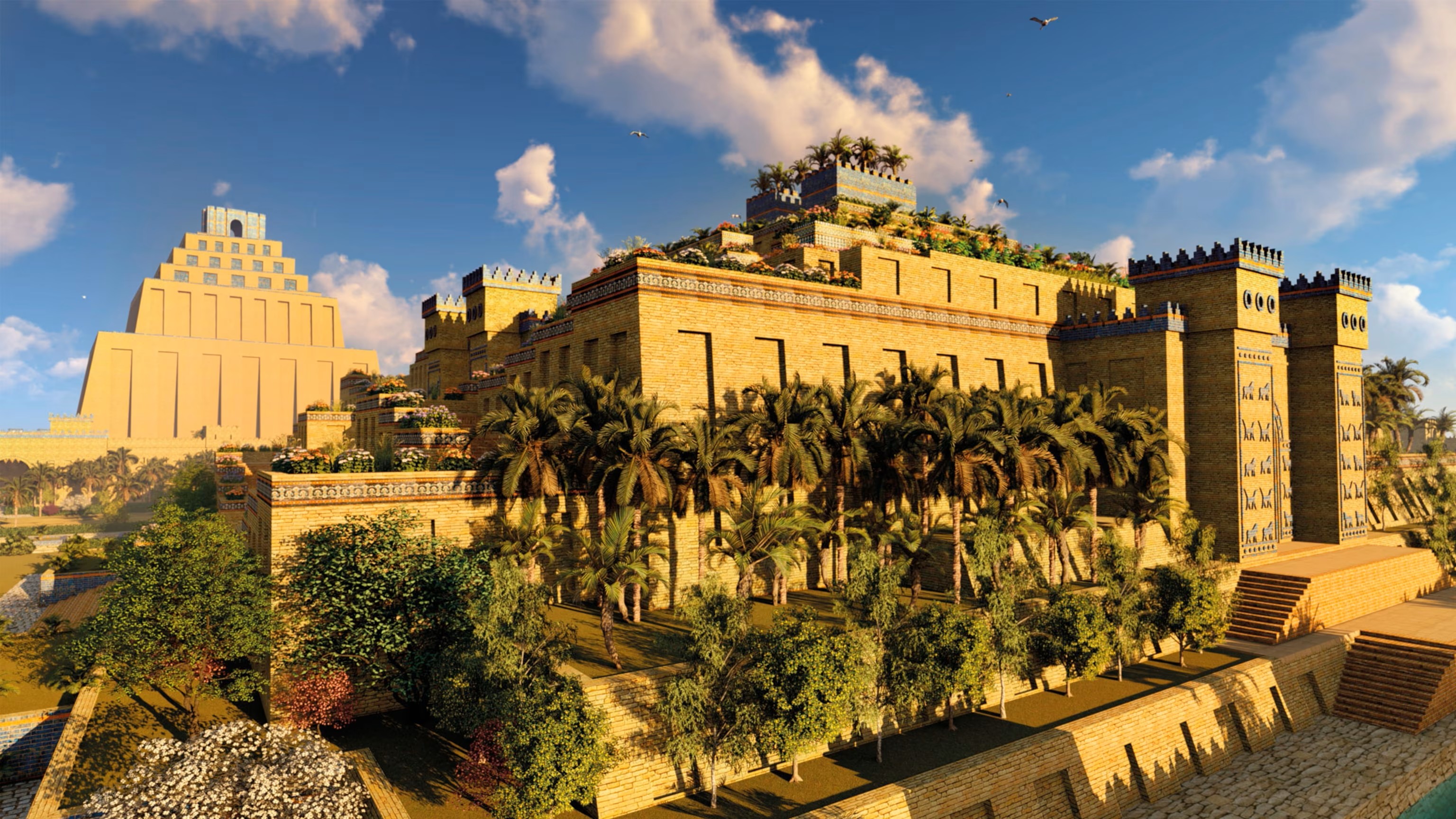
Hanging gardens of Babylon
The Hanging Gardens of Babylon are considered the second oldest wonder of the ancient world, but there is debate among historians about whether they existed or not. According to legend, King Nebuchadnezzar II of the Neo-Babylonian Empire had the gardens built for his wife, Queen Amytis, to remind her of the green hills and valleys of her homeland. While some ruins in the ancient city of Babylon are speculated to be remnants of the gardens, the lack of mentions in Babylonian texts and the absence of definitive archaeological evidence cast doubt on their existence. There are three main theories about the gardens. Some believe they were purely a mythical representation of an ideal eastern garden. Others suggest they existed but were destroyed around the first century AD. Finally, there is a theory that the gardens may have referred to a documented garden built by the Assyrian King Sennacherib in his capital city of Nineveh on the River Tigris.
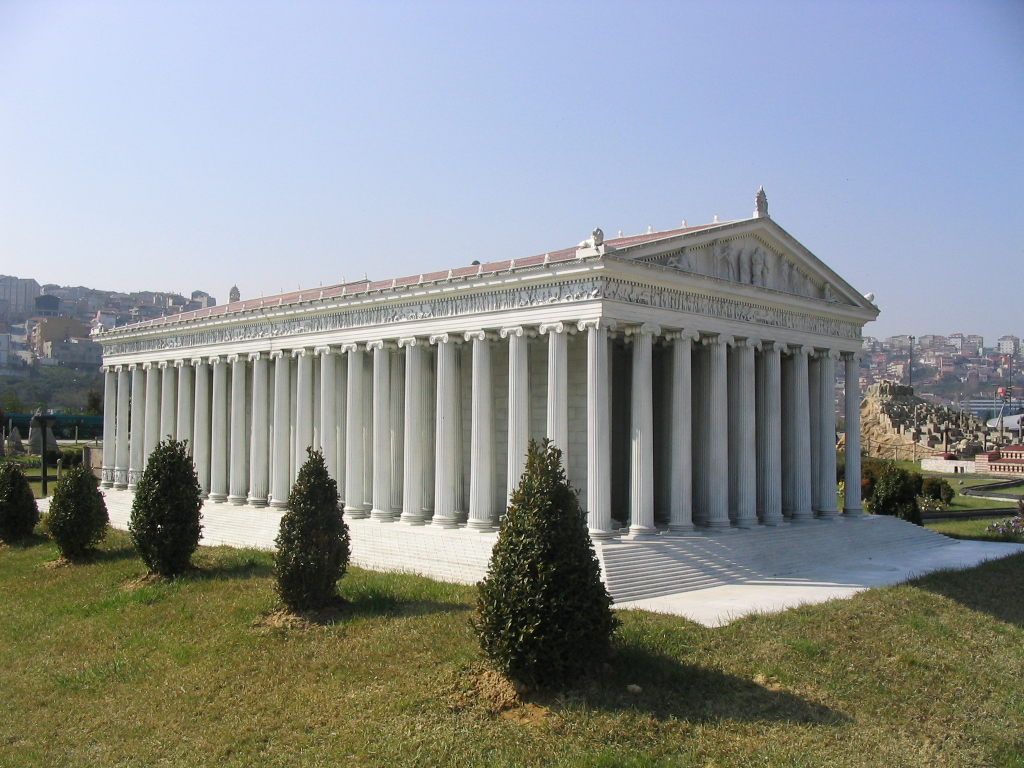
Temple of Artemis
The Temple of Artemis, also known as the Temple of Diana, was a remarkable ancient structure in Ephesus. It was dedicated to a localized version of the goddess Artemis, associated with hunting, childbirth, and chastity. The temple was rebuilt three times. The site was occupied as early as the Bronze Age, and the first temple was built in the second half of the 8th century BC. However, a flood in the 7th century BC destroyed the temple. The second temple, built around 550 BC with the support of Croesus, the overlord of Ephesus, was the first Greek temple made of marble and was larger than the previous one. Unfortunately, it was burned down in 356 BC by a man named Herostratus, who did it to seek fame. The construction of the third and largest temple started in 323 BC and lasted many years. Amazingly, this temple stood for 600 years and even appears in early Christian accounts. Unfortunately, the temple was finally destroyed, believed to be by a raid from the Goths.
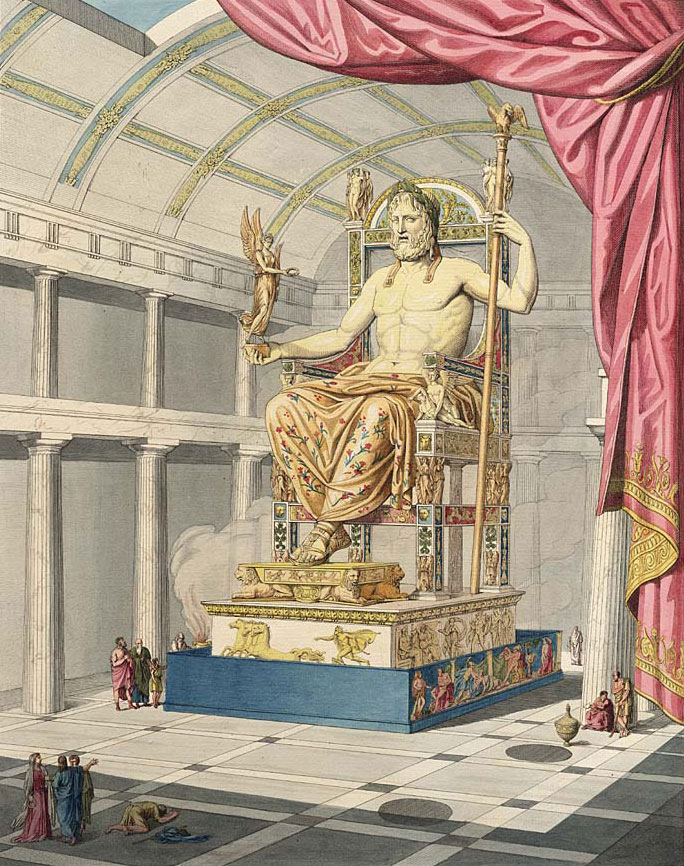
Statue of Zeus
The statue of Zeus was commissioned by the Eleans in the latter half of the fifth century BC for their newly constructed Temple of Zeus to outdo their Athenian rivals. The geographer Strabo noted early in the 1st century BC that the statue gave "the impression that if Zeus arose and stood erect he would unroof the temple. On Zeus's outstretched right hand was a statue of Nike (Victory), and in the god’s left hand was a scepter on which an eagle was perched. The statue, which took eight years to construct, was noted for the divine majesty and goodness it expressed. Unfortunately, the statue was lost and destroyed before the end of the 6th century AD, and there is no evidence as to how it happened. Some say the statue perished along with the temple, severely damaged by fire in 425 AD.
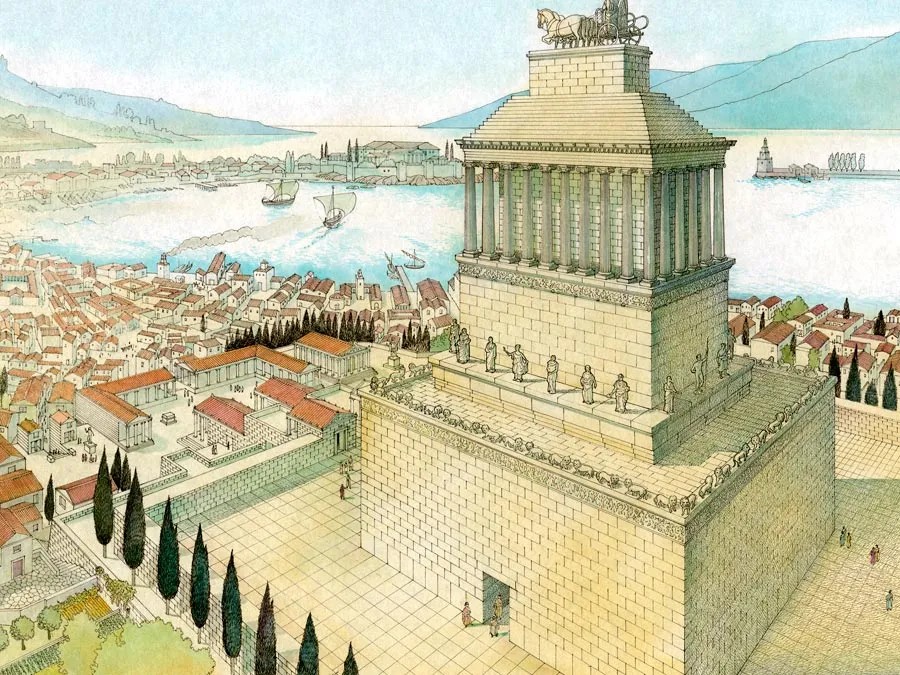
Mausoleum of Halicarnassus
The Mausoleum of Halicarnassus, also known as the Tomb of Mausolus, was a tomb built between 353 and 351 BC in Halicarnassus for Mausolus, a satrap in the Achaemenid Persian Empire, and his sister-wife Artemisia II of Caria. Mausolus had planned for himself an elaborate tomb, and when he died, the project was continued by his siblings. The tomb became so famous that Mausolus's name is now the eponym for all stately tombs, in the word mausoleum. Artemisia lived for only two years after the death of her husband, and the urns with their ashes were placed in the yet unfinished tomb. It is unknown exactly how the mausoleum came to ruin. It is said that the building was probably ruined by an earthquake, between the 12th century and 1402, when the Knights of St John of Jerusalem arrived and recorded that it was in ruins and used some of the rocks from the site to fortify their castle of Bodrum.
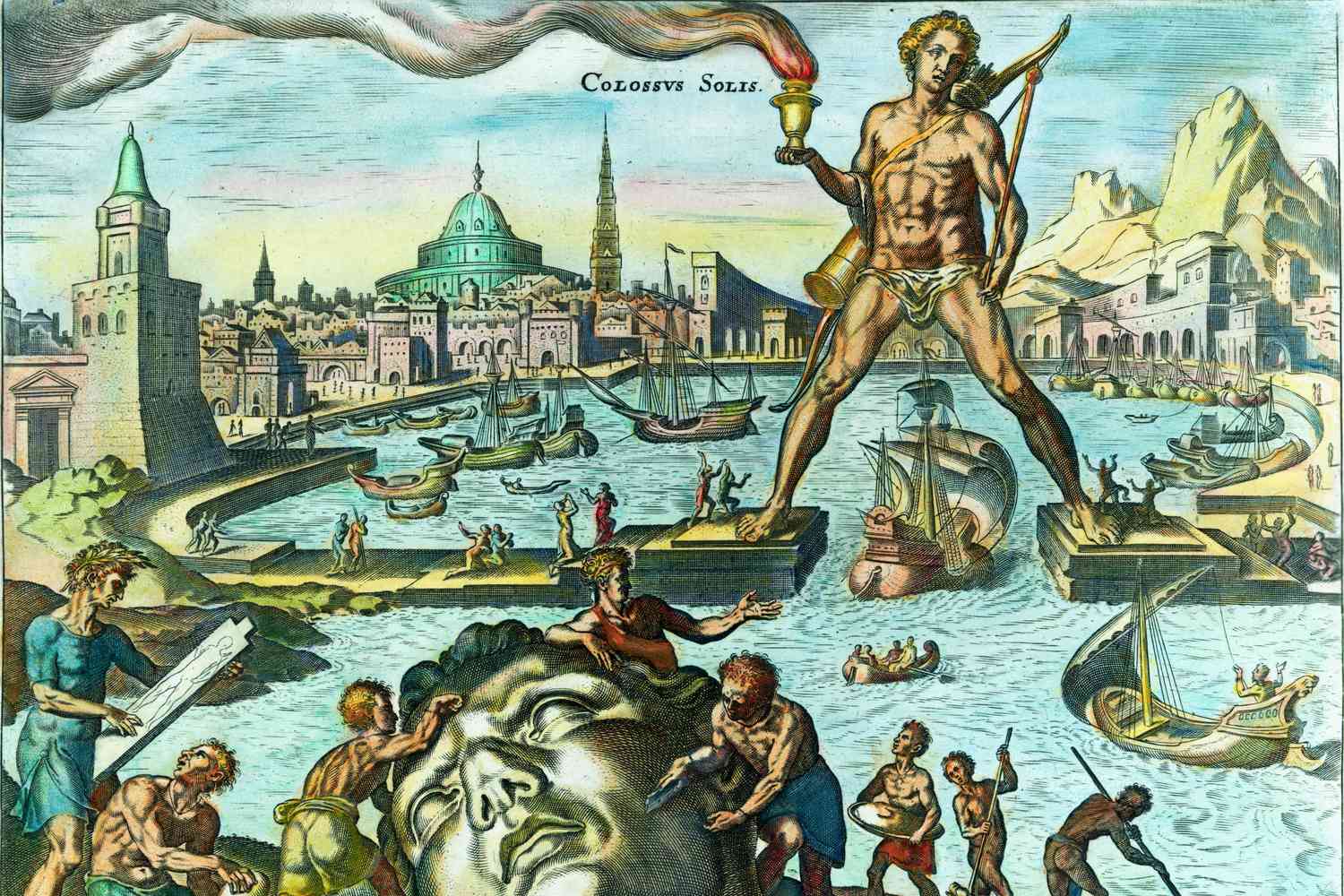
Colossus of Rhodes
The Colossus of Rhodes was a statue of the Greek sun god Helios, built in the city of Rhodes in 280 BC. It was created to commemorate the successful defense of Rhodes City against an attack by the Macedonians, who had besieged it for a year with a large army and navy. This statue, standing at 33 meters tall, was the tallest in the ancient world. Unfortunately, it collapsed during the earthquake of 226 BC, breaking at the knees and falling onto the land. Although parts of it were preserved, it was not rebuilt as warned by an oracle. Some depictions show the statue with one foot on each side of the harbor mouth, suggesting that ships could pass under it. However, it's been suggested that if the completed statue had straddled the harbor, it would have blocked it, and since the ancient Rhodians could not remove the fallen statue from the harbor, it would not have remained visible on land for the next 800 years. In addition, the statue was made of bronze, and engineering analyses indicate that it could not have been built with its legs apart without collapsing under its weight.
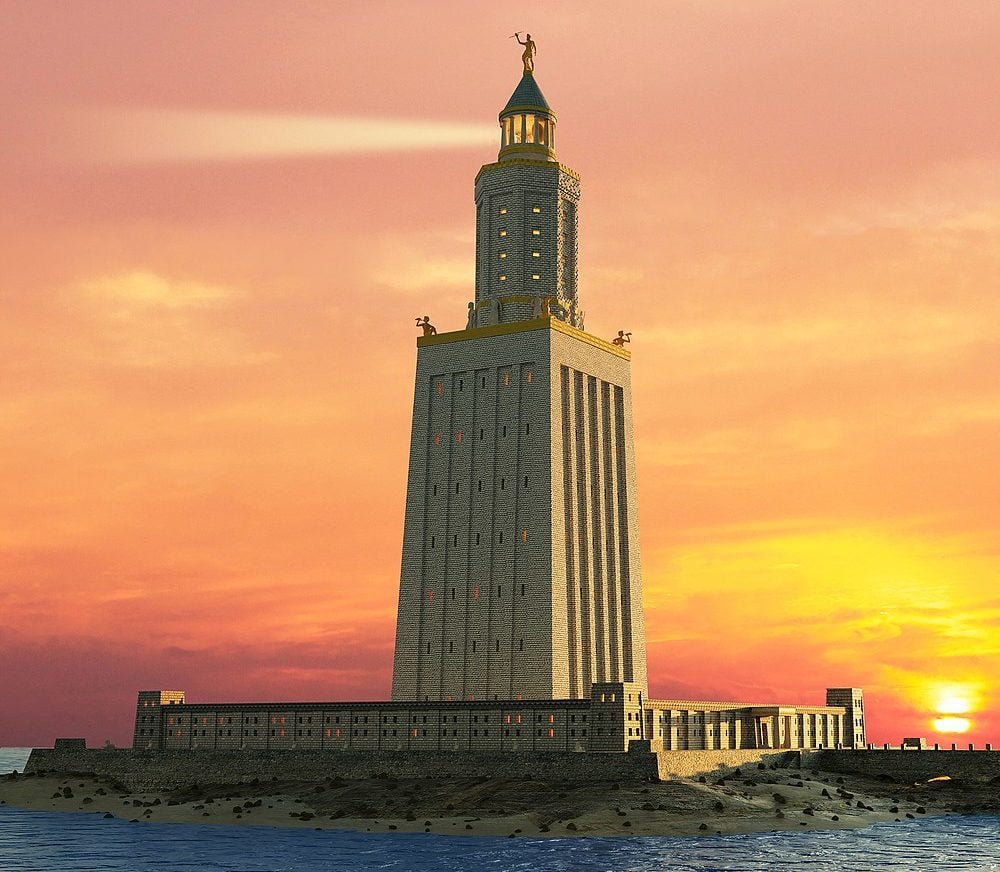
Lighthouse of Alexandria
The Lighthouse of Alexandria, also known as the Pharos of Alexandria, was a lighthouse constructed by the Ptolemaic Kingdom of Ancient Egypt during the reign of Ptolemy II Philadelphus. It was estimated to have a height of at least 100 meters. The lighthouse sustained severe damage from three earthquakes between 956 and 1323 AD and eventually became an abandoned ruin. It was the third-longest surviving ancient wonder, after the Mausoleum at Halicarnassus and the Great Pyramid of Giza, and it partially survived until 1480 when the last of its remaining stones were used to construct the Citadel of Qaitbay on the site. The tower consisted of three tapering tiers: a lower square section with a central core, a middle octagonal section, and at the top, a circular section.
By using form u agree with the message sorage, you can contact us directly now